Tourism in Spain
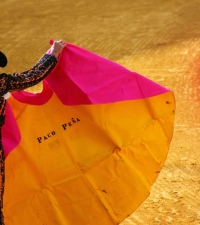
Despite Spain's widespread economic problems, the tourism industry is thriving, catering to the 56.7 million tourists who arrive to the sunny shores of the Costa del Sol, the cosmopolitan metropolis of Barcelona and romantic Seville. In fact, Spain is often listed as a top tourist destination behind France, Italy, China and the United States, thanks to a highly developed tourism sector and world-class hotels.
Spain boasts dozens of UNESCO World Heritage sites, a patchwork of different cultural histories, four official languages and the motor of the Spanish economy during these rough times, tourism.
Madrid and surrounding areas
What was once a poor farming village the geographic center of the country, Madrid is now the de facto, economic and cultural capital of Spain and home to 6.5 million people, known as madrileños. The city's two largest dynasties, the Bourbon and Hapsburg, have left an important cultural and architectural legacy on Spain, and the city's nightlife pulses after a leisurely day popping in and out of world-class museums, breathtaking parks and excellent cuisine.
Don't miss: Madrid is a wonderful city to experience walking and eating. Perhaps its biggest draw is just this; living and observing a typical Spanish city while admiring its cultural gems. Hapsburg and Bourbon architecture, world-class art museums like the Prado and the Reina Sofia and the Plazas Mayor and del Sol. Thanks to the city’s transportation, day trips to the massive El Escorial palace, stately Toledo, the Roman aqueduct of Segovia and the famous walled city of Ávila are close.
Barcelona and the Costa Brava
Spain’s second city is the ultimate in chic, modern and funky – from its noted cuisine to surrealist architecture; Barcelona has a lot of tourist appeal. Because it’s located on the Mediterranean coast, it enjoys a mild climate during the entire year, and is an easy jumping-off point to many small towns in the region, the Pyrenees, the tiny country of Andorra and other Spanish cities.
Don’t miss: the colorful Boquería market, the parade of street performers on Las Ramblas, Gaudí architecture, Barceloneta city beach and the nightlife while in the capital. Monserrat monastery, tucked deep in a mountain range, and lovely Girona are accessible by train, and the northern beaches, such as Cadaqués and Figueras, offer fantastic city escapes to the north.
Santiago de Compostela and the North
Spain’s northern communities sadly don’t get the attention they deserve from the tourism sector. Nestled between sea and mountain, the autonomous communities of Galicia, Asturias and Santander retain traditions from decades past and are worth a trip off the beaten path. The region’s crown jewel is the gorgeous Santiago de Compostela, the ending point of the Saint James Way.
Don’t miss: the delicious seafood, a pilgrim’s mass and the botafumeiro incense holder in the cathedral of Santiago, Coruña’s historic center and cheap eats, the Islas Ciès and Vigo’s oyster market. The summer months mean a bit less rain and fog and plenty of fiestas like San Juan, María Pita and Orteguiera Celtic Music Festival.
Bilbao and the Basque Country
The Northeast corner of Spain is best known for its pintxos cuisine and strange language, Basque. This region is deeply independent, but home to curious sites and lovely fishing villages. Bilbao is the largest and most industrial city, while San Sebastian has a lovely Old World Charm.
Don’t miss: the pintxos scene, lovely San Sebastian and its pristine beaches, hiking to San Juan de Gazatelugatxe monastery , Bilbao’s Guggenheim museum. In the Southern part of the region, closer to Logroño, lies the wine region called La Rioja. Famous Spanish brands like Marqués de Riscal and Cune have their vineyards here, making it a must-see for wine lovers. The Basque Country also encompasses part of France, and there is easy bus transportation between the two countries. Picasso’s Guernica painting, found in the Reina Sofia Museum of Madrid, was based on Hitler’s bombing of the Basque city of Guernika, a well-touristed city of the region.
Andalusia and Extremadura
Andalusia is Classic Spain: bullfighters, fluffy flamenco dresses and Moorish architecture. Gastronomic gems, a dazzling mix of architectural styles and all of the typically Spanish hallmarks can be found in the country’s southernmost region, whereas its neighbor to the north, Extremadura, is known for its wide open spaces and striking castles. These plains are called the Cradle of Conquistadors – the most famous were all raised on the hardened landscape, and most of the riches of the new world were deposited here on their way north.
Don’t miss: the late spring and summer festivals (especially Seville’s Holy Week and April Fair, Málaga’s San Juan Festival, Córdoba’s Patios), beaches along the Costa de la Luz and the Costa del Sol, the Alhambra of Granada, Cáceres’s stone city center, the Roman ruins of Carmona and Mérida, the Mezquita of Córdoba. The beaches in Andalusia are also renowned and where Spaniards flock during the stifling month of August.
The Islands
Spain has two island chains, Las Islas Baleares and Las Islas Canarias. The first floats in the Mediterranean Sea, and is a popular destination with the jet-set crew. Still, Mallorca, Menorca and Ibiza retain their long-standing local traditions and are home to many natural sites. The Canaries, closer, in fact, to Morocco than the Spanish Peninsula, is comprised of seven islands and has two capitals, Las Palmas de Gran Canaria and Santa Cruz de Tenerife. This archipelago is noted for its biodiversity and colorful fiestas, particularly the Carnavales of the island of Tenerife and La Rama on Gran Canaria. Flights are available from several Spanish destinations.
Don’t miss: the nightlife in Ibiza and Gran Canaria, the pumping festivals on each island, hiking in the volcanoes on Tenerife or in the coves of Menorca, the distinct cuisines on each island, pristine beaches, the small villages where island life is retained. Renting a car is recommended for exploring the islands and their beaches and mountains.
Valencia and the Costa Dorada
The stretches of golden ribbons of sand, pyrotechnic festivals and the birthplace of paella are all Valencian claims to fame. This region, located on the Mediterranean, is home to Valencia, the third largest city in Spain, as well as the resorts that have turned Spain into a sun holiday destination for Northern Europeans.
Don’t miss: Valencia is home to the famous (and bloodthirsty) Borgia family, and the city center is riddled with historic buildings where they lived and played. Also in Valencia are the iconic City of Arts and Sciences, wonderful paella, the Fallas and San Juan festivals and funky street art. Nearby Alicante and the Costa Dorada are best known for their beaches and flocks of Northern Europeans, but watersports abound and seafood is the food of choice.
 After having lived in Spain for years (in Castilla y León, Andalusia and Galicia) and having traveled to each of the 17 autonomous community, I’m most at home in Seville, but love the charms of the north and often escape to Madrid for big city life. What I love most about Spain is its diversity – not just in architecture or cuisine, but in language, traditions and people. While most tourists concentrate on the Big Four – Madrid, Barcelona, Seville and Granada – there’s definitely a lot to be said for some of the smaller and less-traveled regions. No trip to Spain, however, is incomplete without tapas/pintxos, a glass of red wine and the evening paseo.
After having lived in Spain for years (in Castilla y León, Andalusia and Galicia) and having traveled to each of the 17 autonomous community, I’m most at home in Seville, but love the charms of the north and often escape to Madrid for big city life. What I love most about Spain is its diversity – not just in architecture or cuisine, but in language, traditions and people. While most tourists concentrate on the Big Four – Madrid, Barcelona, Seville and Granada – there’s definitely a lot to be said for some of the smaller and less-traveled regions. No trip to Spain, however, is incomplete without tapas/pintxos, a glass of red wine and the evening paseo.
By Cat Gaa, who left her native Chicago five years ago to live in the olive groves of Andalusia. Residing in Seville, she teaches first grade at a private school, but all she wants to really do is write.
- My Life Abroad -
A selection of expat stories
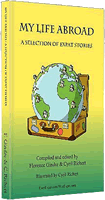
"A fun compulsive read!"
J. Matcham, Amazon
"I strongly advise people ready to live abroad to read this book!"
Patrice, Amazon

 Top Tips For Hiring A Car In Spain
Top Tips For Hiring A Car In Spain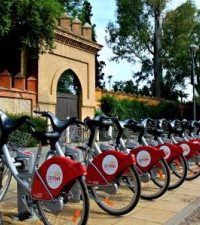 Getting Around in Spain
Getting Around in Spain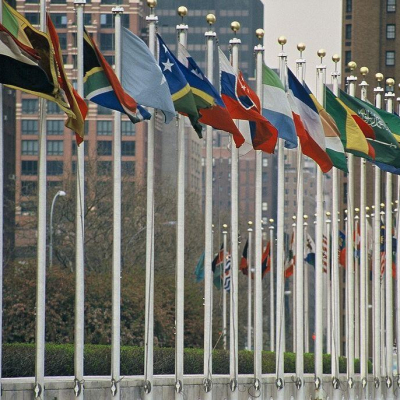 Embassies and Consulates in Spain
Embassies and Consulates in Spain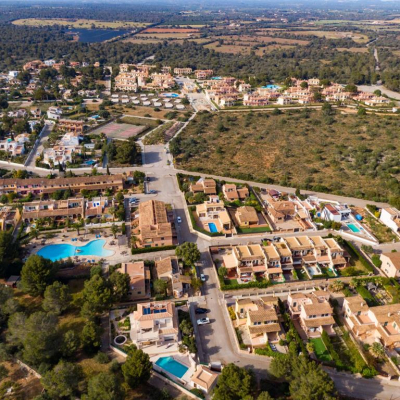 Why using an alternative broker for large money transfers
Why using an alternative broker for large money transfers